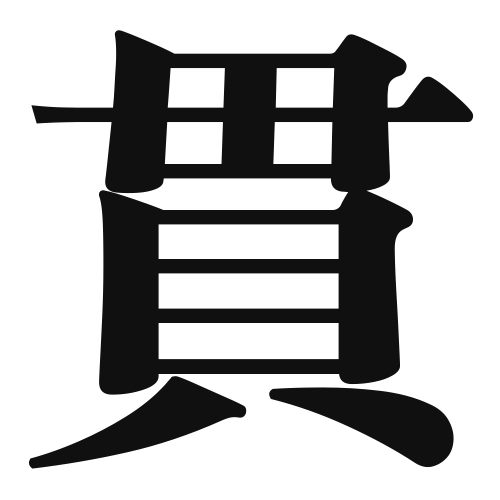1. Overview of Meaning
The kanji “貫” (kan) generally means “to pierce,” “to penetrate,” or “to carry through.” It conveys the idea of something that goes through or connects different points, often used in contexts related to strength or determination.
2. Formation and Radical
Formation of the Kanji: The kanji “貫” is a compound character (会意文字) that combines the elements of “貝” (shell, which often represents wealth) and “貫” (to pierce). This combination suggests the idea of something valuable being penetrated or connected.
Radical: The radical of “貫” is “貝,” which is commonly associated with money or valuables in kanji.
3. Examples of Usage
Common Words and Phrases: Some frequently used words that include “貫” are:
- 貫通 (かんつう, kantsuu) – penetration, through passage
- 貫禄 (かんろく, kanroku) – dignity, presence
Example Sentences in Daily Conversation:
- この道は山を貫通しています。 (このみちはやまをかんつうしています。) – This road penetrates through the mountain.
- 彼は貫禄のある人です。 (かれはかんろくのあるひとです。) – He is a person with dignity.
4. Synonyms and Antonyms
Similar Kanji: A similar kanji is “通” (つう, tsuu), which also means “to pass through” but is more commonly used in contexts of communication or transportation.
Opposite Kanji: An antonym could be “閉” (へい, hei), which means “to close” or “to shut,” representing the opposite action of “to pierce” or “to connect.”
5. Cultural and Historical Background
Relation to Japanese Culture: The kanji “貫” is often associated with strength and determination in Japanese culture, symbolizing the ability to overcome obstacles.
Proverbs and Idioms: One common expression is “貫く” (かんぬく, kannuku), meaning “to carry through” or “to stick to one’s principles,” reflecting the cultural value of perseverance.
